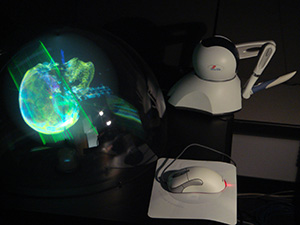
The James Martin Center for Nonproliferation Studies (CNS) at the Middlebury Institute of International Studies at Monterey (MIIS), The Stanley Foundation, and the VCDNP organized a workshop entitled "Treatment, Not Terror" on Thursday, 7 April 2016, which focused on strategies to enhance external beam cancer therapy in low- and middle-income countries while permanently reducing the risk of radiological terrorism.

At the workshop, a recently published report entitled "Treatment, Not Terror: Strategies to Enhance External Beam Cancer Therapy in Developing Countries While Permanently Reducing the Risk of Radiological Terrorism," was presented that highlighted key themes for discussion and identified actionable recommendations for donor countries and for the International Atomic Energy Agency (IAEA). The dialogue focused on ways for policymakers to improve cancer care in Africa while also reducing the threat of radiological terrorism.
To begin the discussion, presenters explained the current situation in low- and middle-income countries (LMICs). It was agreed that cancer treatment in poorer countries is grossly inadequate. LMICs have 80 percent of the global cancer burden, but only 5 percent of the cancer prevention and treatment resources. Meeting this need will require a significant increase in radiotherapy, as documented by the World Health Organization and the Program of Action for Cancer Treatment (PACT) of the IAEA. Estimates point to a current shortfall of 5,000 radiotherapy machines globally, with a large proportion of the need in Africa. Most medical practitioners would prefer to use linear accelerators (LINACs) for teletherapy to address this shortfall. LINACs also have the advantage of posing a smaller security risk than traditional cobalt-60 machines. However, cobalt-60 machines have been less expensive and easier to operate in lower income regions. While this gap has recently been closing, cobalt-60 machines are still dominant in low-income countries and run roughly even with LINACs in the less well off of the middle-income countries.
Given the dilemma between resources, types of cancer treatment machinery and security risks, the workshop participants engaged in active dialogue. A number of possible solutions to enhancing care while reducing security risks were identified. Participants concluded that health care treatment and countering terror acts are not conflicting priorities and that these issues can be solved simultaneously. Pointing to challenges experienced with some donated LINACs, participants focused on the need to improve medical equipment, to ensure that the equipment is not causing harm to the patients. A number of participants stressed that the quality of the equipment should not be compromised and that any replacements should be of high quality. In addition, new machines should be developed that could meet challenging environmental conditions both in LMICs and certain areas of higher-income countries. It was also noted that strategic communications among stakeholders in addressing these issues is of utmost importance. Financial aspects were also discussed; it was agreed that innovative financial schemes in support of this initiative could prove useful. In this vein, participants remarked that the public was not aware of the global cancer problem and funding was grossly inadequate, suggesting that political commitments be raised at all levels to promote this cause and garner support. Recently there had been signs of political will for action, as seen at the 2016 Nuclear Security Summit when 28 states supported a gift basket calling for non-radioisotopic alternatives to high-risk radiological sources.
Regarding the transition period and the dual-use problem of radioactive isotopes, workshop participations agreed that "safety should go hand-in-hand with security: medical sources need to be protected because of their portability and accessibility." It was also agreed that as part of a transition to LINACSs, certification and compliance of standards should be implemented.
Though the emphasis in recent years has been on the security and safety of radioactive sources, workshop participants agreed that the means for funding the transition from cobalt 60 machines to LINACs should be given top priority. Transition to equipment that poses a reduced radiological security risk was a first and necessary step to reducing the risk of radiological terrorism, while providing enhanced medical care in low- and middle income countries.